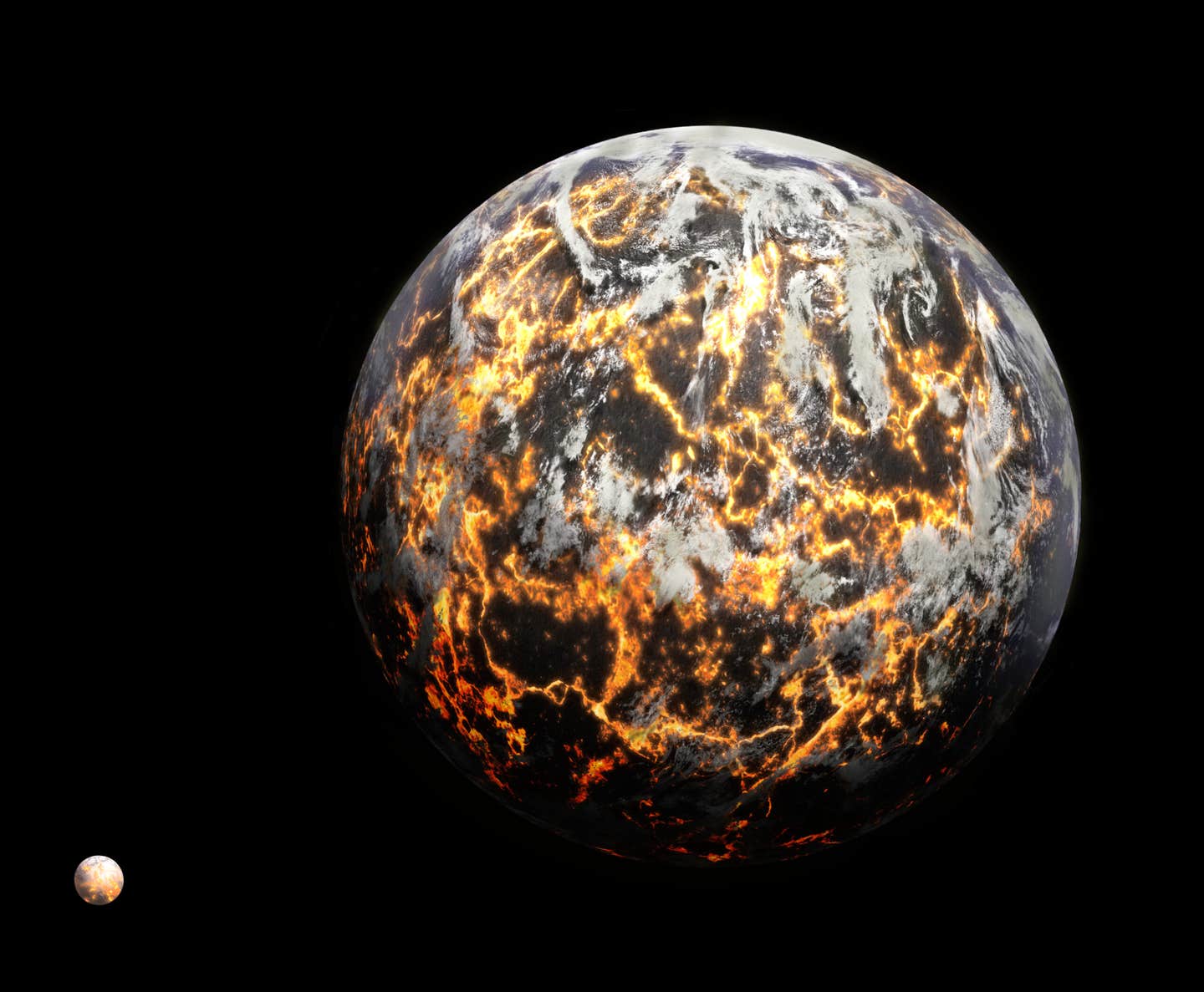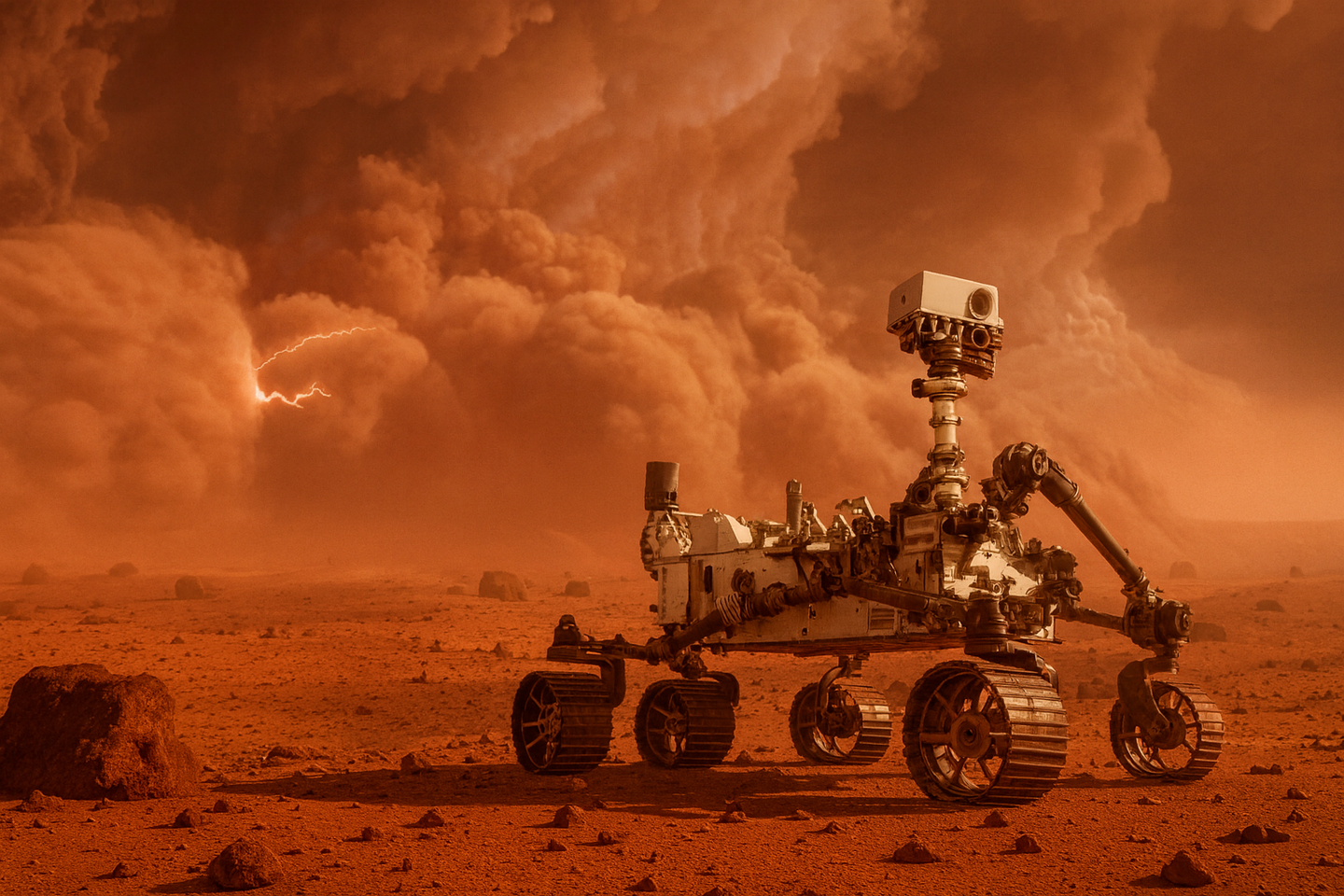4.5 billion-year-old proto-Earth fragments found in Earth’s mantle
MIT scientists find potassium isotope clues revealing ancient proto-Earth fragments deep in Earth’s mantle.

MIT-led researchers uncovered rare potassium isotope anomalies in ancient rocks, revealing hidden remnants of proto-Earth. (CREDIT: Wikimedia / CC BY-SA 4.0)
Millions of years before blue oceans and wandering continents, the Earth in its early days was a molten, tumultuous planet — a roiling mixture of rock and metal condensing within the nascent solar system's dusty disk. Then some 4.5 billion years ago came a calamitous impact by a Mars-sized body that remolded the planet for all time, giving rise to the Moon and re-melting Earth's mantle and crust.
Scientists long assumed that this "giant impact" destroyed all trace of the early, or "proto-Earth," material. But now it seems that fragments of that ancient world could still remain, hidden deep in Earth's mantle.
MIT researchers and colleagues at some international institutions found chemical signatures in ancient rocks that seem to have endured the cataclysmic process that shaped the contemporary planet. Their results exhibit small but detectable variations in potassium isotopes — changes that suggest the remnants of Earth's primordial material preserved.
A Glimpse Into Earth's Earliest Days
The scientists, headed by Nicole Nie, Paul M. Cook Career Development Assistant Professor of Earth and Planetary Sciences at MIT, found that certain rocks in Greenland, Canada, and present-day volcanic hotspots like Hawaii and La Réunion Island all have a characteristic shortfall of the potassium-40 isotope. The rocks are believed to have originated from deep mantle regions that were spared from huge mixing up following the Moon-forming impact.
"This is maybe the first actual evidence that we have preserved the proto-Earth material," Nie says. "We see a piece of very early Earth, even before the giant impact. That's great because we would expect this very initial mark to be progressively removed with the passage of Earth's history."
The potassium-40 deficit — about 65 parts per million below other Earth material of the present day — separates these rocks from not just modern Earth material, but from all the types of meteorites known. The implications of this discovery are that the planet's building blocks were more intricate than had been assumed.
Potassium: A Small Clue With Significant Consequences
To understand why this tiny imbalance is important, it's useful to have some knowledge of isotopes. Potassium occurs naturally in three different isotopic forms: potassium-39, potassium-40, and potassium-41. They share the same number of protons but differ in number of neutrons. Potassium-40 is not abundant but is significant since it's radioactive and decays into argon and calcium over time — processes commonly used by scientists to age rocks.
In other research, Nie's lab analyzed meteorites from throughout the solar system and discovered that each group had slightly unique potassium isotopic signatures. They are similar to cosmic fingerprints that inform us where and when the meteorites were created. Earth's composition did not perfectly match any of them, something that perplexed scientists.
That inconsistency was the answer. If meteorites don't fit Earth, perhaps part of Earth may have existed prior to the catastrophic reworking that scrambled its ingredients. Potassium, Nie realized, might be employed as a tracer of the oldest material — a way of following what might survive of proto-Earth.
Unearthing Ancient Signatures
In their latest study, the researchers searched for that mark not among space debris but among Earth's oldest and deepest rocks. They sampled rocks from the Isua and Nuvvuagittuq regions — some of the Earth's oldest known crust — and volcanic rocks from hotspots where mantle plumes rise from deep in the Earth.
The researchers crushed each rock sample, dissolved it in acid, and isolated the potassium. They precisely measured the ratios of all three isotopes of potassium in a thermal ionization mass spectrometer. What they found was unexpected: a predictable, measurable lack of potassium-40 compared with other material on Earth.
To catch that small variation — a few dozen parts per million — required unusual precision. As Nie explains, it was "like picking out a single brown grain of sand in a bucket of yellow sand."
Survivors of a Planetary Collision
The second question was whether these potassium-40–depleted rocks actually belonged to proto-Earth. To determine this, the researchers conducted computer simulations mimicking the planet's chemical evolution during billions of years of collisions, melting, and mantle convection.
They found that if ancient Earth began life with materials that exhibited a deficit of potassium-40, later impacts and geological mixing would ultimately increase the levels of potassium-40 — resulting in the composition of most rocks today. That would mean the handful of regions that still retain the deficit avoided those processes and survived as igneous remnants of the early mantle.
Interestingly, the isotopic signature of the samples is not equivalent to any known group of meteorites. That implies that the meteorites employed to simulate Earth's formation reflect only part of the equation. "Scientists have attempted to deduce Earth's initial chemical composition by averaging the composition of various groups of meteorites," explains Nie. "But our research demonstrates that the existing meteorite collection is incomplete and that there is still much to be discovered about the source of our planet.
A New View of Earth's Origin
The group — also including Da Wang of the Chengdu University of Technology, Steven Shirey and Richard Carlson of the Carnegie Institution for Science, Bradley Peters of ETH Zurich, and James Day of the Scripps Institution of Oceanography — believes that these old mantle domains are responsible for modern hotspot volcanism. As mantle plumes rise beneath places like Hawaii, they may carry with them a trace of proto-Earth material to the surface.
The find refutes centuries of traditional assumption. For decades, researchers had assumed that the catastrophic collision vaporized the whole planet, scattering its chemistry. The new data show that lower regions of the mantle remained insulated, preserving an ancient record of Earth's formation.
These isotopic clues to potassium hold promise anew for understanding how planets are formed and evolved. If proto-Earth material survived the collision that created the Moon, perhaps other planets — even other planetary systems — would also retain vestiges of their very beginnings.
"This finding provides us with a unique window into the materials that have created our world," Nie adds. "It's akin to finally acquiring a lost puzzle piece that has been stored deep within the planet for billions of years."
Practical Implications of the Research
The discovery rewrites the book on what scientists have always known as planetary formation and evolution. By discovering intact pieces of proto-Earth, researchers learn more about the early solar system's chemistry — information that can better inform models of how rocky planets elsewhere in the universe form.
The finds also have the potential to illuminate why Earth's mantle remains compositionally diverse and hence why today's volcanic and plate tectonic activity is being impacted.
Lastly, finding these ancient remnants of proto-Earth is connecting us more tightly to the planet's origins — and maybe uncovering how worlds form under the same cosmic conditions.
Research findings are available online in the journal Nature Geoscience.
Related Stories
- How a planetary crash with Theia brought water and life to Earth
- Scientists unlock the secrets of Earth’s earliest rocks
- Astronomers discover new quasi-moon orbiting the Earth
Like these kind of feel good stories? Get The Brighter Side of News' newsletter.
Joseph Shavit
Science News Writer, Editor-At-Large and Publisher
Joseph Shavit, based in Los Angeles, is a seasoned science journalist, editor and co-founder of The Brighter Side of News, where he transforms complex discoveries into clear, engaging stories for general readers. With experience at major media groups like Times Mirror and Tribune, he writes with both authority and curiosity. His work spans astronomy, physics, quantum mechanics, climate change, artificial intelligence, health, and medicine. Known for linking breakthroughs to real-world markets, he highlights how research transitions into products and industries that shape daily life.



